Jessica Peterson Wants You To Find Your “Love Language” At Work
August 02, 2019 | Filed in: Woman of the Week
Jessica Peterson founded Mighty Oak, an animation studio that specializes in handmade materials and design, after hitting several career roadblocks in her 20s. Now she makes videos for clients ranging from The New York Times to NBC, HBO, and Netflix. We visited her at the Mighty Oak office in Brooklyn, where she talked about finding her “love language” as an entrepreneur, and why a weekend of mom time can be a great business decision.
Want more M.M.? Sign up for our newsletter.
WHEN I DESCRIBE WHAT MIGHTY OAK DOES, a lot of people ask, “Is it like Gumby?” And sometimes it is. But we also do so much more, especially as the world of animation has seen a huge resurgence over the past five to ten years. There’s a big appetite for striking visuals with an authentic human touch. That handcrafted quality comes through in the imperfections and variations that happen when a human is at the wheel. You see a desire for that across different mediums. It’s similar to how people still listen to records because they like the old, raw hiss of the sound, whereas the remastered version of the same music might sound a little too polished. At Mighty Oak, our tagline is, “We bring the human touch back into the picture.” And we mean that metaphorically and literally.
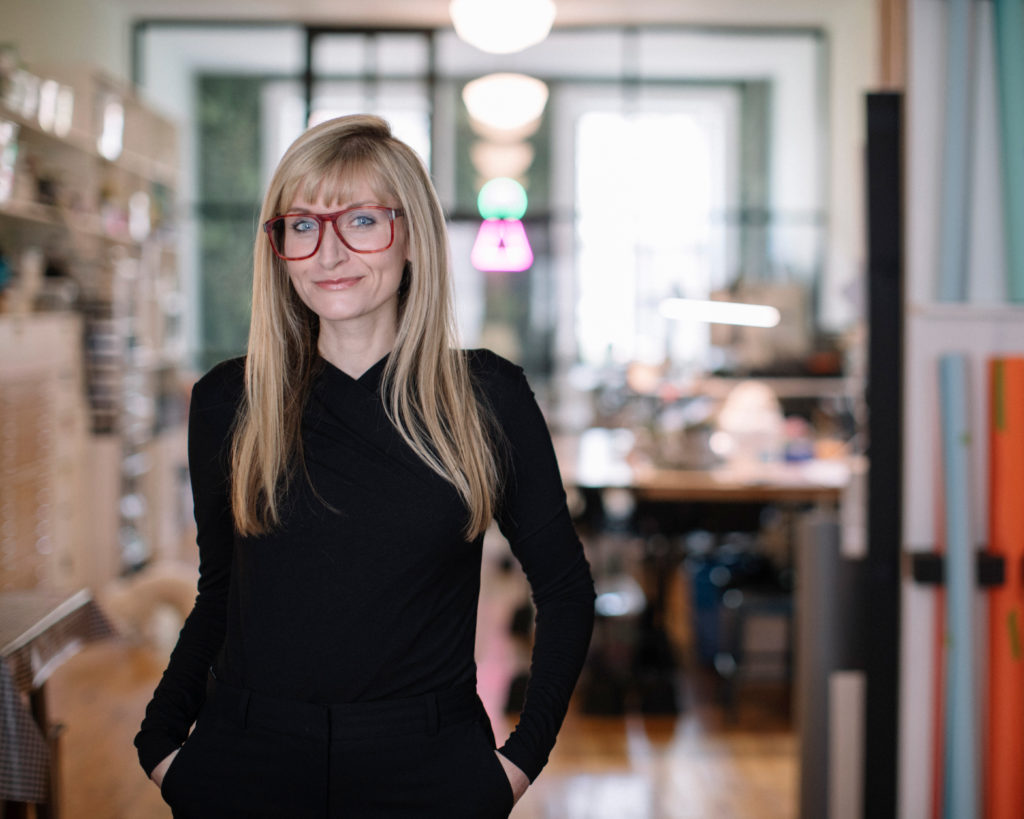
Jessica wears the Octavia top and the Mejia pant.
I GREW UP IN A SMALL TOWN IN CONNECTICUT and went to school in Boston for music. I’m a huge music nerd, and I definitely thought I’d be in that industry forever, on the business side of things. I started my career in concert and tour promotion. Then the recession hit and I realized I needed to rethink my career path. I ended up going back to school, and I got a graduate degree in media studies with a special focus on museums. I was interested in how audiences receive content, and how to make museums accessible and approachable for people who don’t come from a background where museums are part of their day-to-day life.
AFTER GRAD SCHOOL, I managed the communications department for a children’s art museum. That’s where I met one of my current business partners, Emily, who ran the museum’s media lab. She taught stop-motion video to kids and adults, and she and I would collaborate on a lot of projects for marketing materials. When I decided to leave the museum and try to start my own branding and web design business, I got her on board to make some videos. Then I got a call from Samsung for a project. And that was the beginning of us finding this video niche.
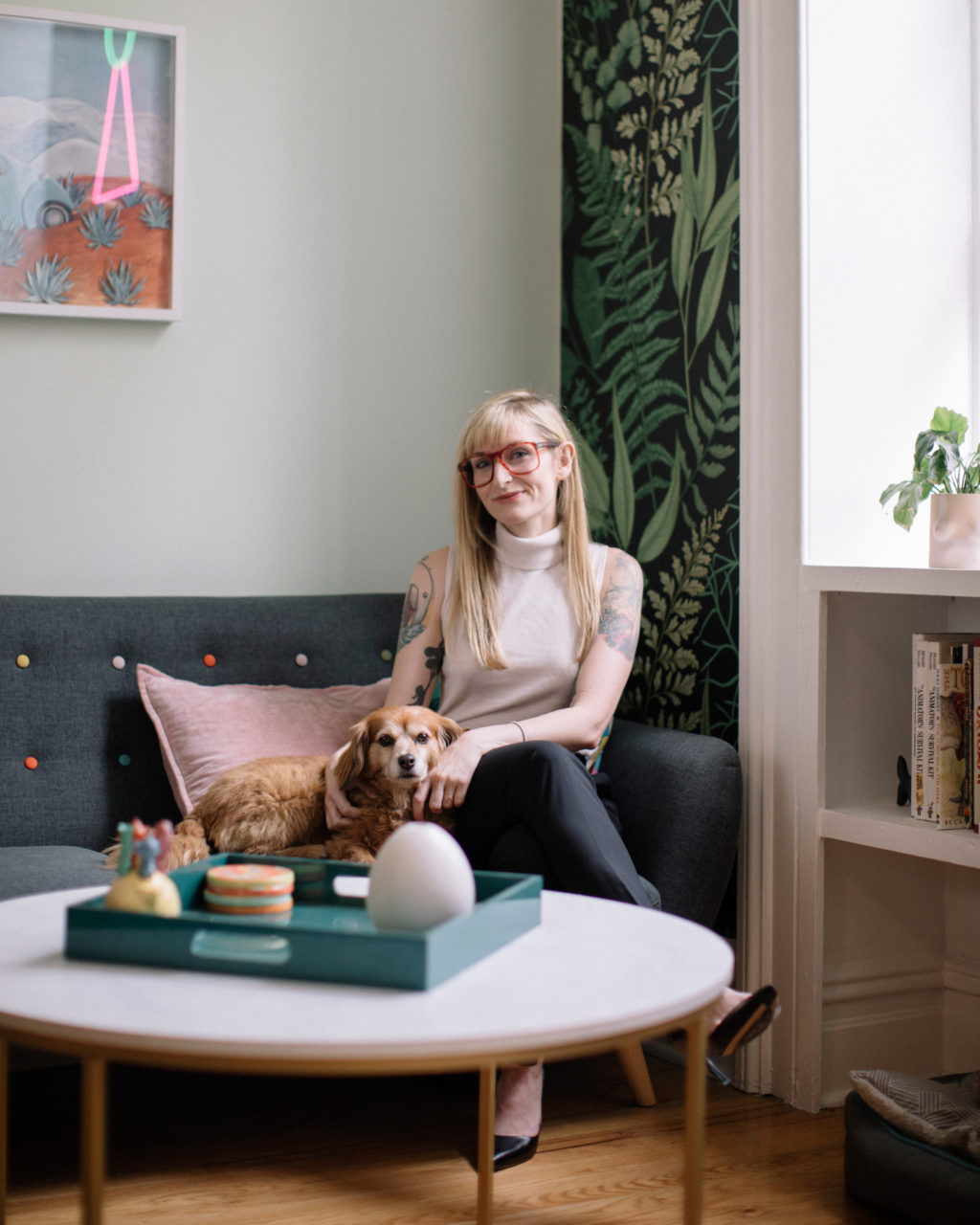
Jessica wears the Patricia top, the Sawyer tank, the Mejia pant, and the Ginger pump.
MY MAKER ABILITY MAY BE LIMITED, but I have always written stories and produced things. When I was in school, I’d write plays and direct them. I also made mix-tapes and sold them at recess, and I had a radio station in my basement. When I was growing up, entrepreneurship was not encouraged in the same way it is now, especially for girls. People would say, “Well, you’re outgoing and friendly, so you should do marketing or work in hospitality.” It took me a while to learn that my natural strengths were about leading teams, developing operations, and using my creative side to build a business.
I HAVE TWO BUSINESS PARTNERS, Emily and Michaela, and they’re both more visually artistic than me. A lot of people go into business together because they both do the same thing and think the same way, but I think it’s better when you have complementary skill sets. My partners had artistic talents, but needed help to turn them into something that could make money. And that’s where I can help. Conversely, it took me a good six months of playing the hand model in our video shoots before I understood the stop-motion process. I asked a ton of questions, and I think that also strengthened our business. It’s good for artists and craftspeople to be able to explain their process in layman’s terms. They need to know how people on the outside see what they do. If they start using jargon, the conversation isn’t as accessible or interesting.
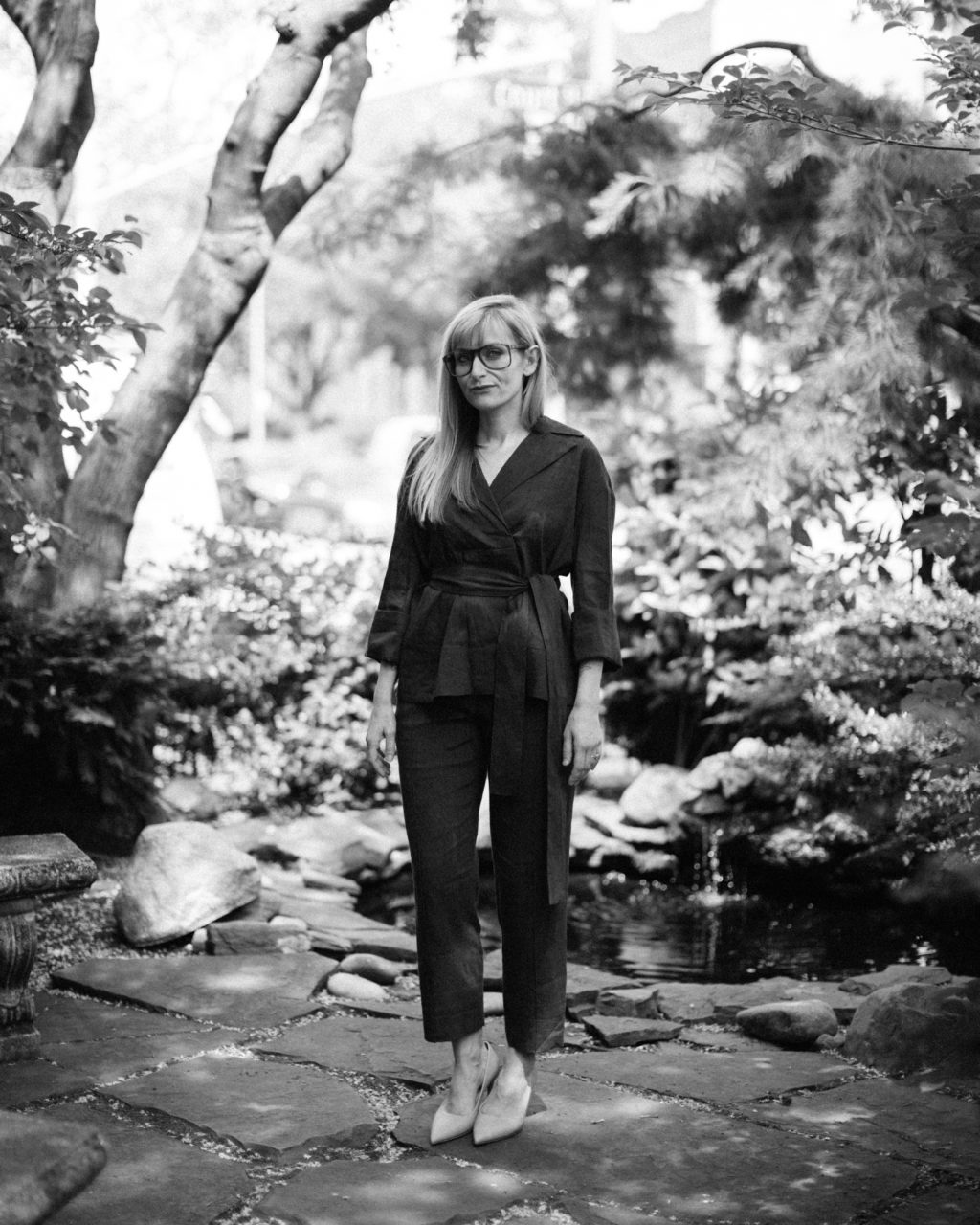
Jessica wears the Allie top, the Chester pant, and the Ginger pump.
STARTING MY BUSINESS WASN’T A SMOOTH PROCESS. In fact, when I left my museum job, I was actually going to work for another company. But within a couple of weeks, it became clear that the role was not a good fit. It was a real crossroads for me, and I didn’t know what direction to take.
WHEN I FOUND MYSELF WITHOUT A JOB, I reached out to all of my artist contacts from the museum and asked if they needed help with the business side of what they were creating. Many of them said yes, so I started taking on projects with them. I enjoyed it so much that I decided to form a company to do that. I applied for a small grant to start a business and I got it. That was the catalyst to make Mighty Oak official, and I had a lawyer friend help me file for an LLC.
AT FIRST, MIGHTY OAK WAS JUST ME, and that was tough. About six or seven months in, I entered a Brooklyn Public Library business plan competition. The entry was due on my 30th birthday, and after I sent it in, I cried on my husband’s shoulder. I was like, “This isn’t going to work, and I’ve just gone through so many iterations of my work life that haven’t made sense. I don’t know what I’m doing or what’s wrong with me.” Then I did what any mature 30-year-old does and went home to my mom. While I was visiting her, I found an old box of letters from when I was in middle school. It was fan mail, basically, for a story that I had written, and it made me remember that storytelling is my strength. It’s cheesy, but that moment helped me refocus. I came back to New York and decided to concentrate the business around video, specifically animation. From there, I reached out to Emily, and things got going.
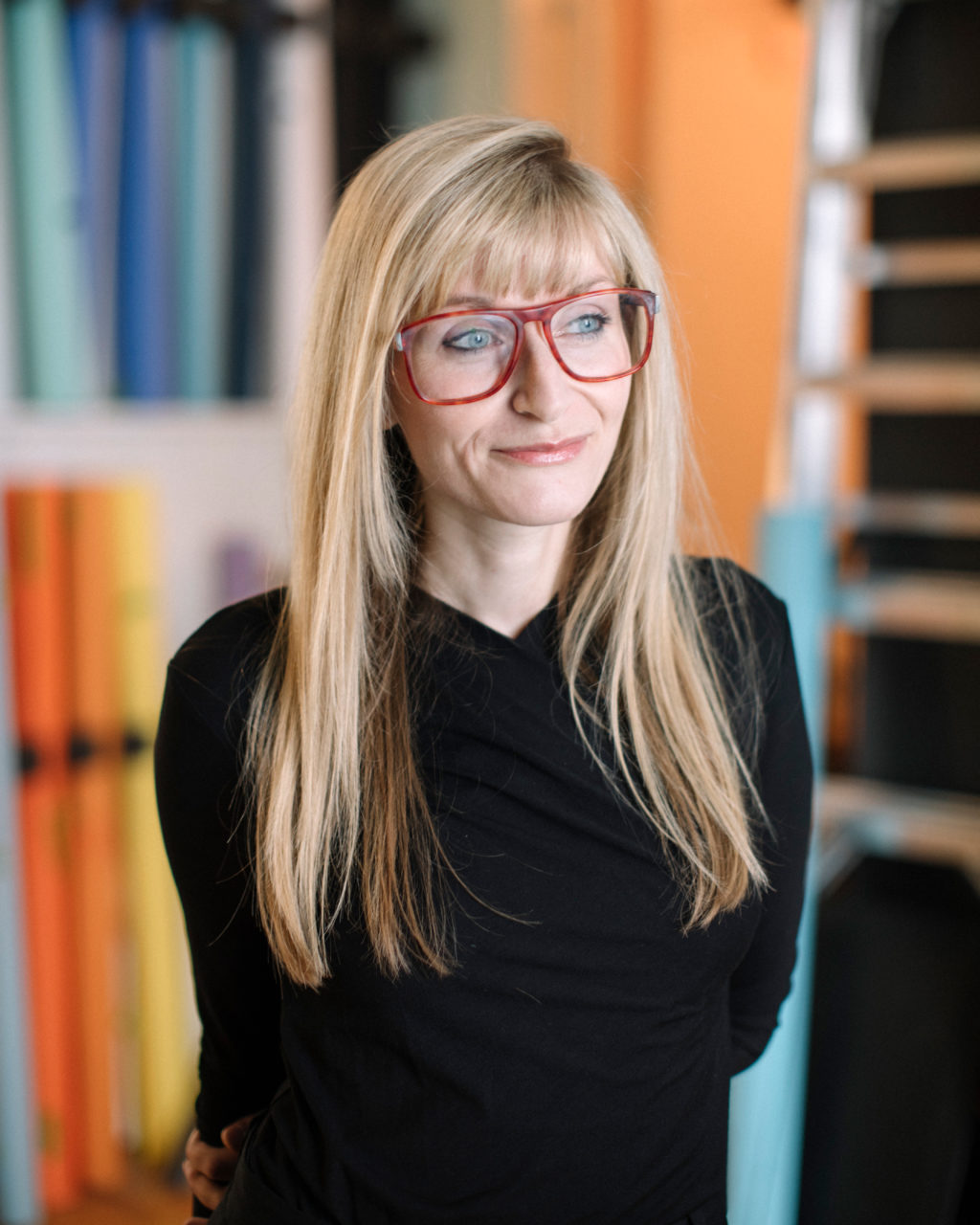
Jessica wears the Octavia top.
THERE HAVE BEEN MANY MARKERS in my life where I’ve hit a wall and said, “This isn’t working.” And for a long time I would respond by doing a huge right or left turn. Like, “I have to switch to a new industry.” Or, “I have to go back to school.” After I started Mighty Oak, I learned that sometimes the best course of action is to pause, and then approach things from a slightly new angle. I don’t always need to do a full U-turn. I had to focus my strengths a little bit more rather than trying to build a whole new set of them.
A LOT OF PEOPLE IGNORE WHAT THEY’RE NATURALLY GOOD AT, because they take it for granted. Once I realized, “Oh, I’m good at building a business around creative people, but I don’t do this other thing very well, so I’m going to bring other people in to help with it”—that was a big game-changer. It has also been an important part of scaling. For example, I knew we had to hire a producer because I was doing a lousy job juggling it with business work. But for the health of the company, we had to do it, and it has paid off tenfold.
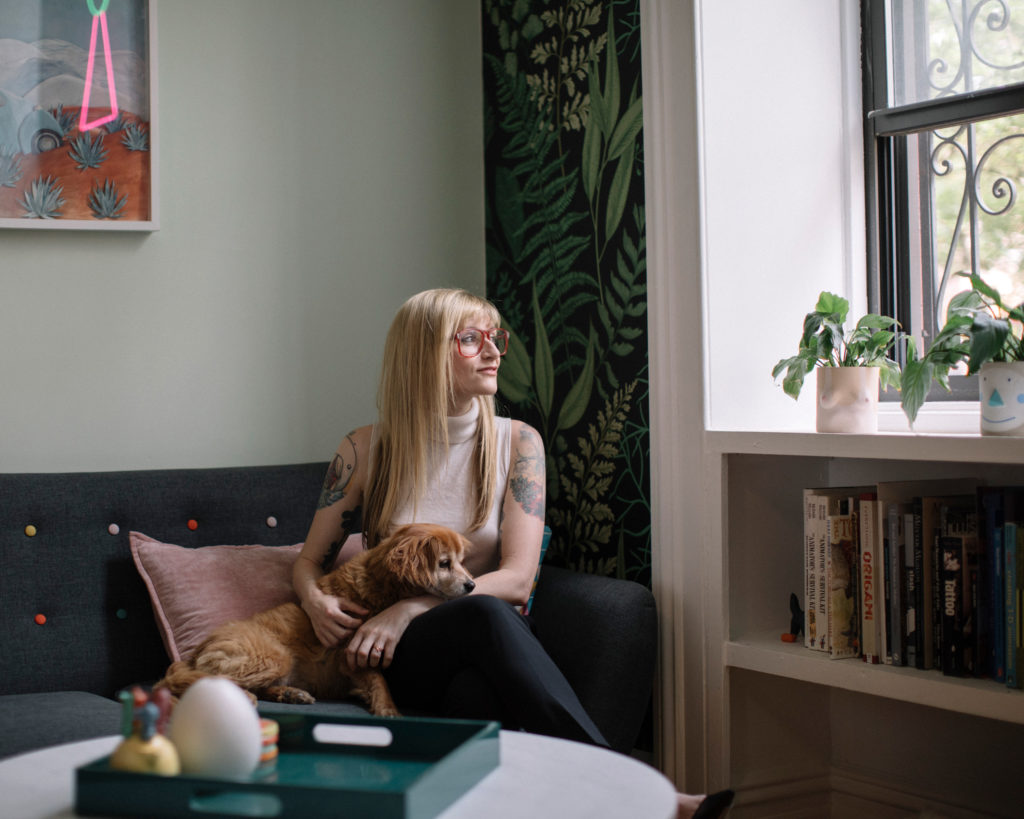
Jessica wears the Patricia top, the Sawyer tank, the Mejia pant, and the Ginger pump.
YOU KNOW THE “LOVE LANGUAGE” TEST? I think you can apply it to yourself as a businessperson, not just a partner. I’ve learned that my love language isn’t words of affirmation. It’s acts of service. When someone brings me a solution to a problem—or they come to me having already fixed the problem—that often makes me happier than someone telling me I’m doing a great job. And that goes both ways. Solving problems is how I contribute to the whole, and I find it extremely gratifying.
I KNOW A LOT OF REALLY STRONG WOMEN—AND STRONG MEN—who don’t like to ask for help. But I am the opposite. I love asking questions. I don’t see it as a sign of weakness. I see it as a sign of curiosity, and I think it’s healthy. That’s where being an extrovert is useful. I have no problem reaching out to someone and asking a direct question. And that has helped me build a great network of female founders and directors in New York. I’ve found that if you have a clear vision to share with people, they often get excited and want to be part of it.
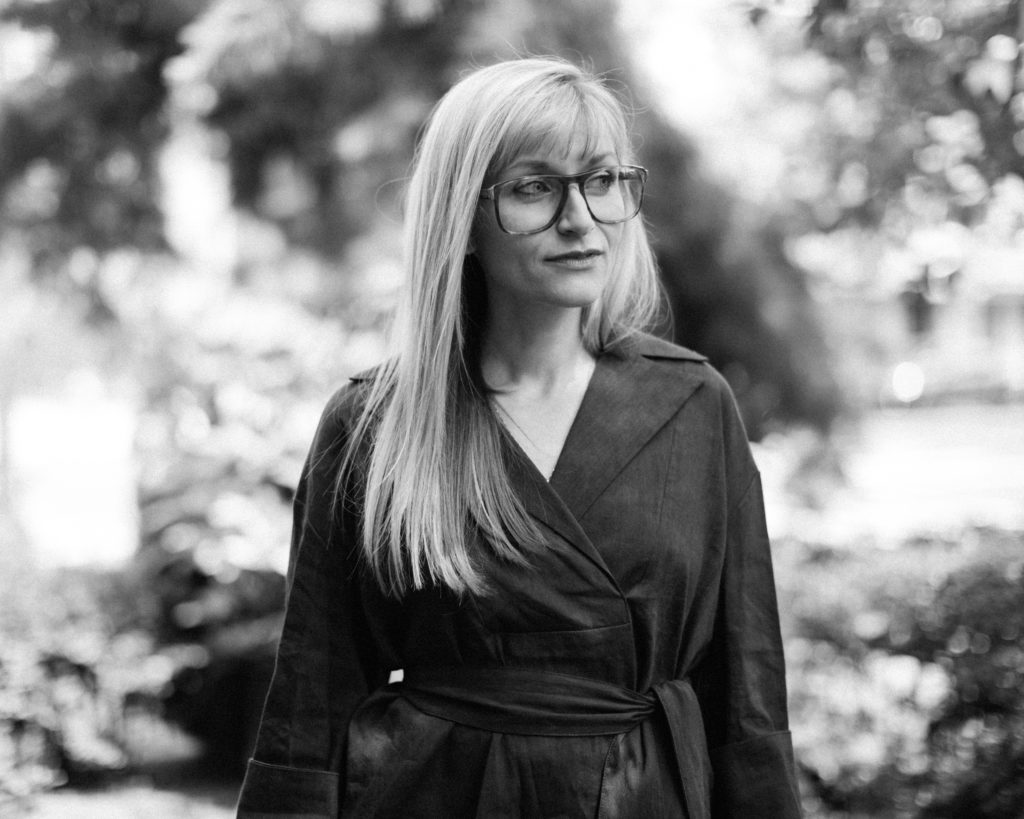
Jessica wears the Allie top.
ONE OF MY SKILLS is recognizing good talent that works well with us. Emily has that ability too. A lot of it is just a gut check. And sometimes it’s timing. Emily brought on our third business partner, Michaela, after Michaela found out that her studio space was getting sold and she wouldn’t be able to work there anymore. We’d been contracting with her since day one and she’d become an essential part of our business. So when she was like, “I might have to move back home to Rhode Island,” we were like, “But we can’t lose you!” I called my parents and said, “I need $5,000 so that I can ask this person to be my business partner. I’ll pay you back in six months.” Michaela said yes, and we very quickly recouped the cost of hiring her. Sometimes you just know when you need to act.
BEING THE BOSS, AND BEING ACCOUNTABLE to everyone at the company—it can be stressful. For those overwhelming moments, I have my safe go-to’s. I watch Golden Girls, I call my mom, I take a long walk with my dog, I talk to my husband. My husband works in HR, managing talent and peer mentorship, so it’s like I’ve got a built-in mentor at home. I don’t know if that’s the role he thought he was signing up for when we met, but he’s been a huge support. I’m a talker, so when I’m having trouble with something, it helps to verbalize it.
Photographs by Rich Gilligan. Styling by Chris Walsh.





